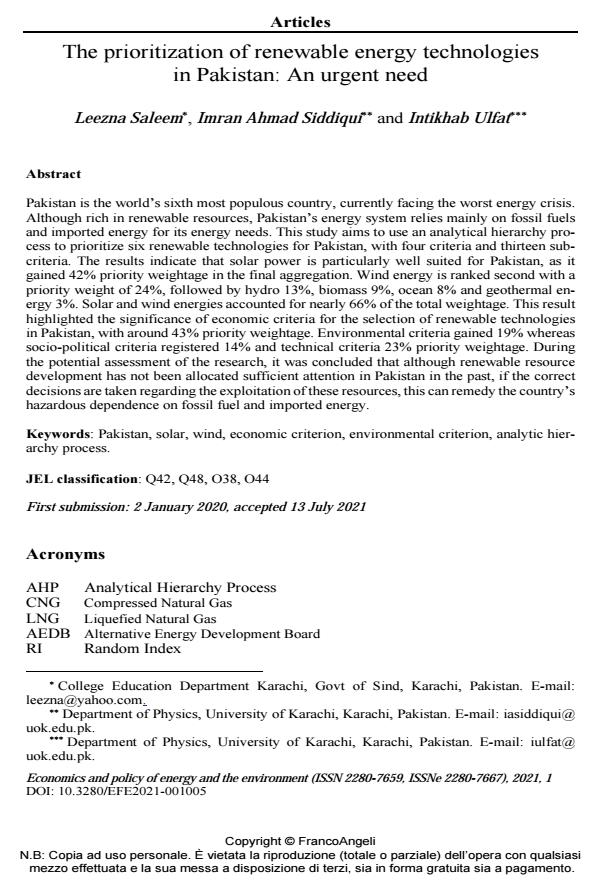The prioritization of renewable energy technologies in Pakistan: An urgent need
Titolo Rivista ECONOMICS AND POLICY OF ENERGY AND THE ENVIRONMENT
Autori/Curatori Leezna Saleem, Imran Ahmad Siddiqui , Intikhab Ulfat
Anno di pubblicazione 2021 Fascicolo 2021/1
Lingua Inglese Numero pagine 23 P. 81-103 Dimensione file 407 KB
DOI 10.3280/EFE2021-001005
Il DOI è il codice a barre della proprietà intellettuale: per saperne di più
clicca qui
Qui sotto puoi vedere in anteprima la prima pagina di questo articolo.
Se questo articolo ti interessa, lo puoi acquistare (e scaricare in formato pdf) seguendo le facili indicazioni per acquistare il download credit. Acquista Download Credits per scaricare questo Articolo in formato PDF

FrancoAngeli è membro della Publishers International Linking Association, Inc (PILA)associazione indipendente e non profit per facilitare (attraverso i servizi tecnologici implementati da CrossRef.org) l’accesso degli studiosi ai contenuti digitali nelle pubblicazioni professionali e scientifiche
Pakistan is the world’s sixth most populous country, currently facing the worst energy crisis. Although rich in renewable resources, Pakistan’s energy system relies mainly on fossil fuels and imported energy for its energy needs. This study aims to use an analytical hierarchy pro-cess to prioritize six renewable technologies for Pakistan, with four criteria and thirteen subcriteria. The results indicate that solar power is particularly well suited for Pakistan, as it gained 42% priority weightage in the final aggregation. Wind energy is ranked second with a priority weight of 24%, followed by hydro 13%, biomass 9%, ocean 8% and geothermal en-ergy 3%. Solar and wind energies accounted for nearly 66% of the total weightage. This result highlighted the significance of economic criteria for the selection of renewable technologies in Pakistan, with around 43% priority weightage. Environmental criteria gained 19% whereas socio-political criteria registered 14% and technical criteria 23% priority weightage. During the potential assessment of the research, it was concluded that although renewable resource development has not been allocated sufficient attention in Pakistan in the past, if the correct decisions are taken regarding the exploitation of these resources, this can remedy the country’s hazardous dependence on fossil fuel and imported energy.
Parole chiave:Pakistan, solar, wind, economic criterion, environmental criterion, analytic hierar-chy process.
Jel codes:Q42, Q48, O38, O44
Leezna Saleem, Imran Ahmad Siddiqui , Intikhab Ulfat, The prioritization of renewable energy technologies in Pakistan: An urgent need in "ECONOMICS AND POLICY OF ENERGY AND THE ENVIRONMENT" 1/2021, pp 81-103, DOI: 10.3280/EFE2021-001005